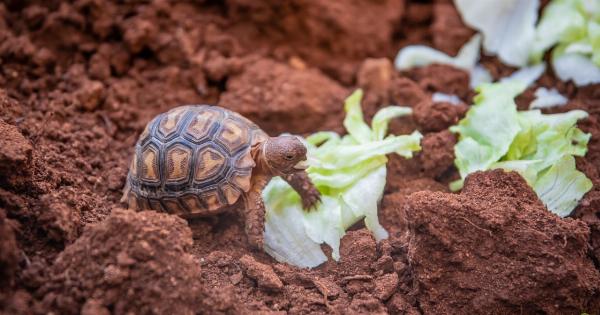Introducing solid foods to your baby is an exciting milestone in their journey of growth and development. As a parent, it’s essential to understand when and how to start introducing solids, what foods to offer, and how to ensure a safe transition.
This guide will provide you with all the necessary information to make this process a smooth and enjoyable one for both you and your baby.
When to Start Introducing Solids?
The American Academy of Pediatrics (AAP) recommends starting solids around six months of age. By this time, babies have typically developed the necessary motor skills and digestive system to handle solid foods.
However, every baby is different, so it’s important to consider their individual readiness cues.
Look out for signs that your baby is ready for solids, such as:.
- Sitting up with minimal support
- Showing interest in the food you’re eating
- Ability to pick up objects or food and bring them to their mouth
- A decreased tongue thrust reflex (pushing food out of the mouth with the tongue)
- Increased appetite and demand for breast milk or formula
Preparing for Solid Foods
Before you introduce the first solid food to your baby, make sure you have the necessary equipment and a suitable environment for feeding. Here are a few tips to help you get prepared:.
- Invest in a reliable highchair or feeding seat that offers good support.
- Choose soft-tipped spoons specifically designed for babies.
- Clear your schedule for the first few feedings to allow sufficient time and minimize distractions.
Choosing the Right First Foods
The first foods you introduce to your baby should be gentle on their developing digestive system and easy to swallow. Here are some ideal options for initial introduction:.
- Single-grain cereals: Rice, oatmeal, or barley cereals fortified with iron are often recommended as first foods. These cereals can be mixed with breast milk or formula to create a smooth texture.
- Vegetables: Pureed or mashed vegetables like sweet potatoes, carrots, peas, or squash are rich in essential vitamins and minerals.
- Fruits: Mashed or pureed fruits such as bananas, avocados, pears, or applesauce are great choices due to their natural sweetness and nutritional content.
- Proteins: Once your baby has tried a variety of single-ingredient purees, you can gradually introduce pureed meats (chicken, turkey, or beef) or beans (such as lentils or black beans).
Introduction Process
When introducing solids, follow these steps to ensure a smooth transition:.
- Choose a time when your baby is well-rested and not too hungry.
- Sit your baby in an upright position in their highchair.
- Offer a small spoonful of the selected food on the tip of a soft-tipped spoon.
- Bring the spoon gently to your baby’s lips and allow them to taste the food.
- Observe your baby’s reaction and offer more if they seem interested.
- Continue with breast milk or formula as the primary source of nutrition.
Progressing with Solids
As your baby becomes more comfortable with eating solids, you can gradually increase the variety and texture of the foods you offer. Here’s how to progress:.
- Introduce one new food at a time, waiting at least 3-5 days before introducing another. This allows you to monitor for any allergic reactions or digestive issues.
- Gradually increase the texture of the foods from smooth purees to mashed, then finely chopped or shredded.
- Introduce finger foods, such as small pieces of soft fruits or cooked vegetables, to encourage self-feeding and improve fine motor skills.
- Include a variety of foods to ensure a well-balanced diet and exposure to different tastes and textures.
Common Concerns and Tips
It’s natural for parents to have concerns when introducing solid foods. Here are some common concerns and tips to address them:.
- Allergies: Start with single-ingredient foods to easily identify any potential allergies. Watch for symptoms like rashes, vomiting, or difficulty breathing. If you suspect an allergic reaction, consult your pediatrician.
- Choking hazards: Avoid foods that pose a high choking risk, such as whole grapes, nuts, hard candies, or chunks of meat. Always supervise your baby during mealtimes and ensure foods are cut into appropriate sizes.
- Texture aversion: Some babies may be hesitant to try new textures. Gradually increase the texture as mentioned earlier and offer a variety of tastes and flavors to encourage acceptance.
- Quantity: In the beginning, solid foods are a complement to breast milk or formula. Let your baby guide the amount they eat and pay attention to their hunger and fullness cues.
- Patience is key: It can take multiple attempts for a baby to accept a new food, so don’t get discouraged. Keep offering a variety of foods and flavors to develop their palate.
Maintaining a Positive Mealtime Environment
Mealtime should be a positive and enjoyable experience for both you and your baby. Here are some tips to encourage a healthy relationship with food:.
- Schedule regular and consistent mealtimes to establish a routine for your baby.
- Sit together as a family during meals, even if your baby isn’t eating the same food yet.
- Use positive reinforcement and encourage your baby’s efforts, even if they make a mess or refuse certain foods.
- Let your baby explore and play with their food, as it helps develop their sensory skills.
Conclusion
Introducing solid foods to your baby is an exciting and important step in their development. Be patient, observant, and adaptable as you navigate this journey together. Remember, every baby is unique, and they will develop their own preferences and pace.
Enjoy this special time of exploring new flavors, textures, and watching your baby grow into a confident and healthy eater!.





























